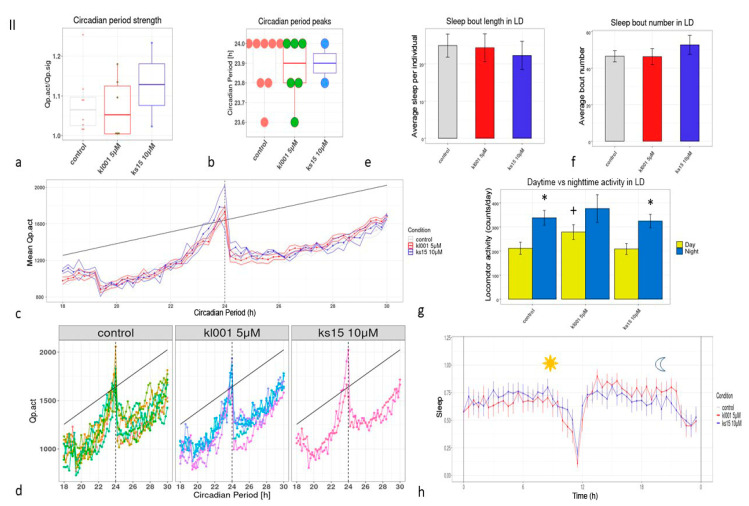Figure 4.
The parameters of male flies’ circadian rhythms, sleep/activity profile until the age of 34–41 days: (a)—circadian period robustness; (b)—circadian period peaks’ quantitative representation; (c)—mean periodogram, (d)—individual periodograms, (e)—total sleep in LD, (f)—sleep bout number in LD, *—p < 0.05, Mann-Whitney test; (g)—comparative diagram daytime vs. nighttime activity in LD, *—p < 0.001 ANOVA with Tukey/Kramer procedure, also p < 0.01 with Scheffe’s procedure, for light and dark periods of the day, +—for light and light in different cohorts by treatment, (h)—sleep profile for the differences in local distributions were measured with ANOVA for the control and KL001 groups. We observed only a total daytime activity elevation in the KL001 cohort of old age (p < 0.01).

